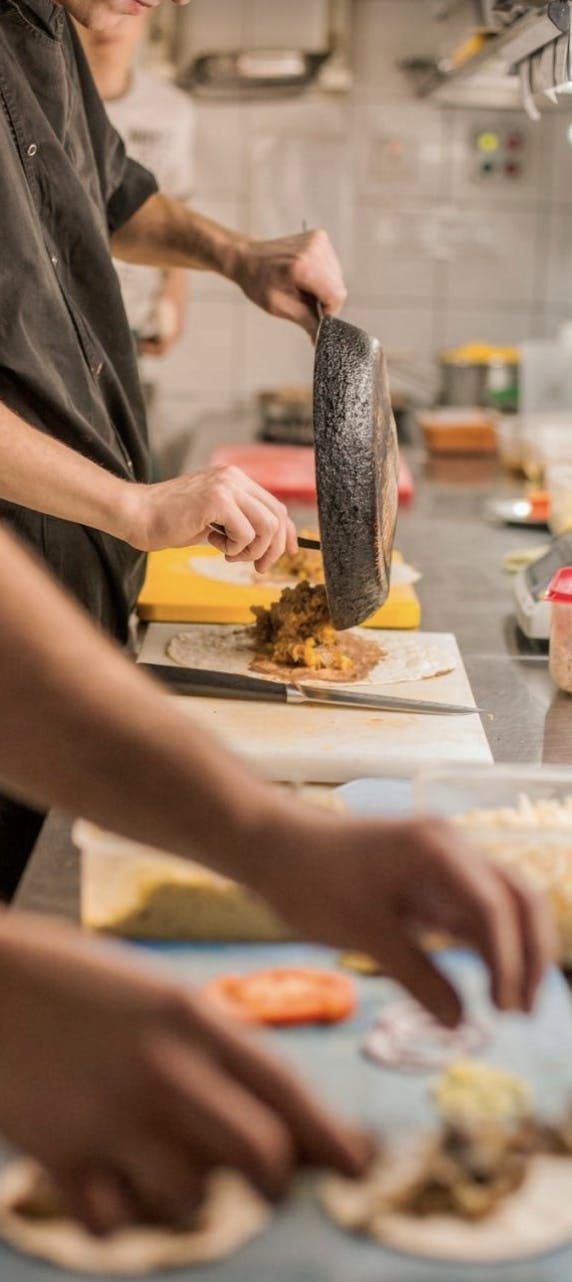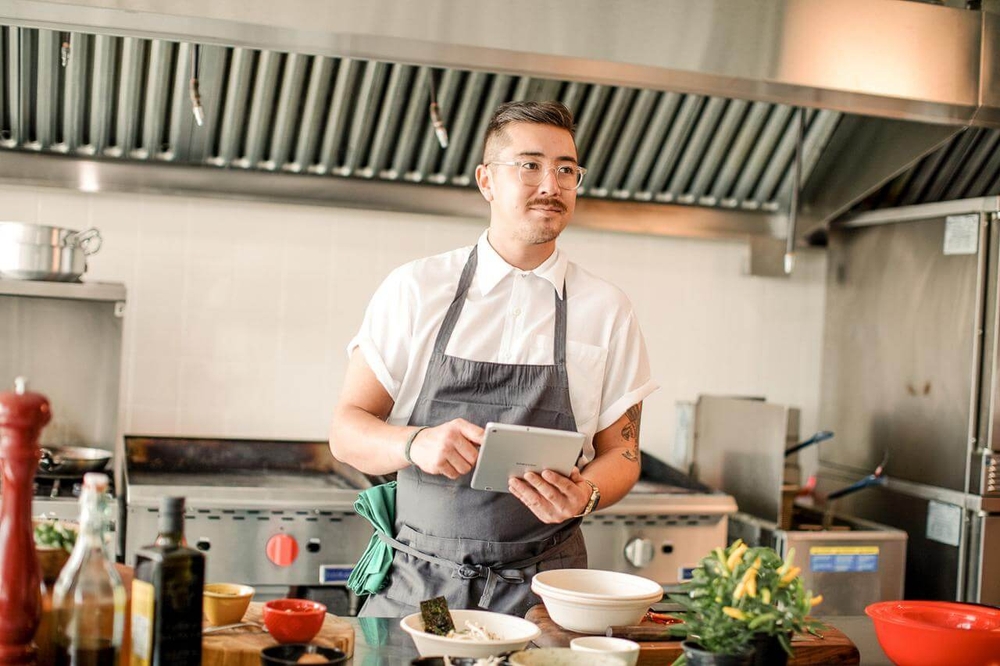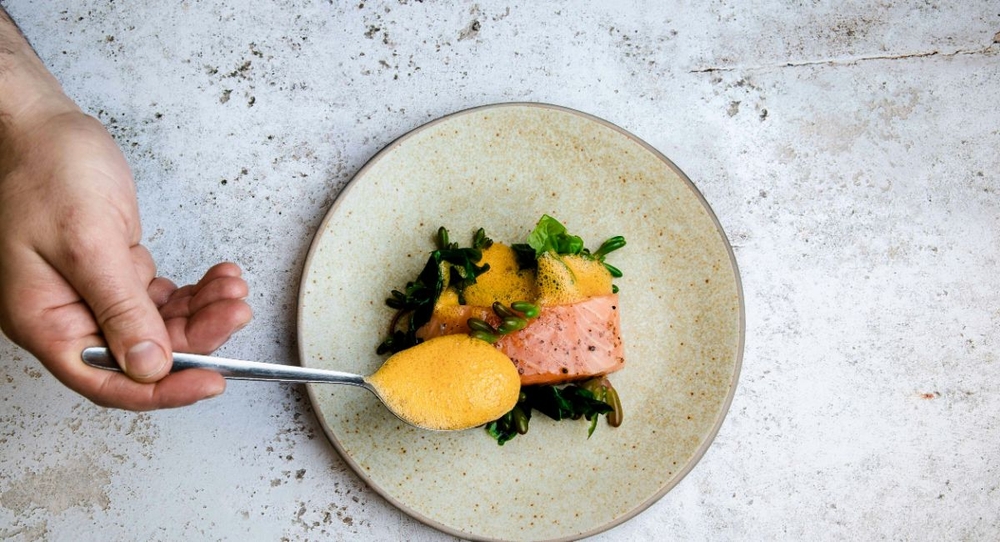Start a food delivery service: your complete how-to guide
Table of Contents
CloudKitchens
How many tacos can be delivered from a 1000sqft restaurant?
The same amount as a 200sqft ghost kitchen.

For the longest time, restaurant delivery was the exception and not the norm. Pizza joints were among the few restaurants that incorporated the convenience of a home delivery option. As more and more restaurants subscribed to this food delivery business model, it paved the way for online food ordering apps like Uber Eats, DoorDash, GrubHub, and Postmates.
Suddenly, every brick-and-mortar restaurant began to take advantage of the opportunity to expand their revenue streams. And this industry paradigm shift was only accelerated by the pandemic, which, in many places, forced restaurants to operate on a delivery-only basis. Now, if your restaurant doesn’t offer food delivery services, it’s missing out on an essential competitive advantage.
Are you a restaurant owner and wish to incorporate this facet into your business model? Are you wondering how to start a food delivery service?
Here’s what you need to know about the food delivery industry.
Why you should know how to set up a delivery service?
The delivery service market is booming, and it’s not solely the result of the pandemic. As noted above, this appears to be an industry shift that will become a permanent facet of the food and beverage industry.
In 2019, there was $18 billion in online food delivery revenue. And, experts project that segment to grow to $31.9 billion by 2021, with an annual growth rate of 9.18% over the next five years in the food delivery industry.
Last year, Morgan Stanley conducted their annual survey on restaurants and delivery services. Their findings back the notion that delivery will increasingly grow to be the status quo. Notable results include:
- U.S. food delivery service could grow at 18% annually.
- Current 6% market penetration ($18 million) is projected to reach 13% by 2025 ($60 billion).
- Digitally adept 18-34 diners are the largest users and drivers of the market.
- The total addressable market for online delivery is expected to grow from $325 billion in 2020 to $470 billion by 2025.
And it’s not just small restaurants that have benefitted from the transition to delivery. Even major chain brands like McDonald’s and Starbucks have willingly embraced the delivery model. According to Restaurant Dive:
“As Grubhub, Uber Eats, and DoorDash expand their partnerships with national brands, these chains have begun posting improved sales. Delivery is helping Wendy’s increase brand awareness and improve sales, for example. Average check sizes have been 1.5 to two times higher on delivery orders and customer satisfaction has been high, Wendy’s executives said during the fast food chain’s most recent earnings call.”
Put simply, if you don’t add delivery or don’t know how to start a food delivery business, you could be missing out on an opportunity to grow your business, expand its revenue streams, and reach new customers.
How to set up a delivery service for your restaurant
So, what actions must you take to get started? Steps include:
1. Build a delivery menu
It may be a smart business decision to limit what food you offer for delivery. Some meals are best eaten right then and there. They may get soggy or ruined if not consumed immediately, which could then lead to unhappy guests and poor reviews through no fault of your own.
Similarly, having a simplified delivery menu also makes prep and packaging an easier task for staff.
Take the time to draw up a menu. Be sure to consider including your restaurant’s most popular items. Also, if you have a liquor license, you may still be able to offer take-out cocktails.
3. Determine how delivery orders will be handled
Do you want to dedicate a specific portion of your back kitchen staff to be focused on delivery while the larger share handles front house diners?
This is an option that some restaurants opt for. Separating the back kitchen allows staff to specialize, thus ensuring that both services are streamlined and that orders get filled as quickly as possible. It also helps to prevent mistakes or oversights.
This may be the best option, especially if you have an alternate delivery menu.
4. Decide whether you want to handle delivery in-house or with a third-party provider
One of the other major decisions you’ll have to make is to deliver the food using your own fleet of drivers, or partner with apps like Uber Eats.
If you have your own delivery service, you’ll need to hire and train drivers. You may also need to acquire vehicles or, at least, provide insurance for your employee’s personal vehicles. As you might imagine, this could be time-intensive and come with high initial investment costs.
Your other option eliminates the need to hire drivers and deal with all of the hassles of creating an internal delivery service. However, you’ll have to pay a commission fee on orders. With Uber Eats, that’s a 30% delivery fee and a 15% order for pick-up fee.
5. Dedicate employees to handle the delivery
If you suddenly add delivery services, that will most likely have an impact on overall efficiency.
Chances are, you’ll be processing, preparing, and packaging a lot more orders than you’re accustomed to. Like your kitchen staff, you may want to dedicate one of your employees to be in charge of managing deliveries. As the quality controller, they can ensure that:
- Meal items are out in a timely manner
- Every part of the order was satisfied, including special requests
- Everything is packaged properly in to-go boxes
- The food courier can get in and out as quick as possible
Similarly, have you considered where completed orders will be placed? Or how delivery drivers will pick up the orders?
To avoid mistakes and confusion, it’s ideal to designate a space where delivery food can be packaged and picked up, thus allowing drivers to avoid waiting in an unnecessary line.
6. Invest in packaging
The state in which a customer receives their food could be the deciding factor in whether or not they ever patronize your restaurant again.
More importantly, it could be their first touchpoint with the restaurant. And first impressions are everything. If they receive food that’s cold or messy because of cheap packaging, they likely won’t have a good initial experience.
Even if you have to pay a little extra, be sure to invest in the best food packaging available. That way, you can do your part to make their home dining experience as close as possible to in-person dining.
7. Consider upgrading your restaurant software
Whether that’s a ghost kitchen in Philadelphia, Miami, or just about anywhere, all orders are centralized through a single POS system.
If not, you may want to get a new system that houses both in-house and delivery under one auspice. That way, you can centralize all of your orders and customer data.
Online ordering platforms also make it easy to see your menu, place orders, and pay for meals. Similarly, you may want to update your website so that it links to third-party delivery services and allows customers to order their delivery directly from there.

8. Market your delivery services
If delivery is a new offering, then that’s something you’ll want to let customers know about.
For starters, consider running an initial promotion that targets new customers. And for your regulars and in-house customers, be sure to inform them after their meal is done. You could also offer delivery discounts to those same groups. Other places you should add this information include:
- Social media channels
- Your website
- Your storefront
- Google My Business
- Email newsletters
9. A modern take on food service delivery
If you weren’t already doing delivery, adding the service isn’t an easy feat. Nor is it cheap. There’s a lot you’ll have to do to get it set up and running efficiently.
But that’s only if you’re following the traditional path outlined above.
Today, CloudKitchens provides a better alternative for restaurants that want to expand their restaurant, with lower risk and investment costs, and higher returns. At CloudKitchens, we provide you with commercial kitchens that are optimized for and dedicated to delivery. Launching a new location can take as little as 4 weeks and costs a fraction of the price.
So, how does that work?
You license a customizable ghost kitchen that provides the ideal space needed to make your food. All orders are centralized through a single POS system. And with a few backhouse staff cooks and members, you’ll be ready to go.
CloudKitchens – reimagine delivery services
CloudKitchens is changing the way restaurants operate. When you partner with us, there’s no need for staff at brick-and-mortar locations to be distracted with delivery meal preparation. Benefits of this include:
- Ghost kitchens are located in centralized spots to ensure that delivery is as quick and efficient as possible
- Our on-site logistics and fulfillment team ensures that meals are delivered faster and more accurately
- We handle the cleaning, maintenance, and security of the facility
- You can manage all deliveries from a single tablet
All of this cuts down on the time, headache, and investment necessary to add a delivery service or open up a new location. Our ghost kitchen business model makes it even easier to obtain all the necessary licenses and permits needed to open a restaurant.
So, what are you waiting for? Are you ready to reimagine what food service delivery looks like with a ghost/virtual kitchen model? Take a tour today!
Explore ghost kitchen locations across the US:
- Ghost kitchens in San Francisco
- Ghost kitchens in LA
- Ghost kitchens in NYC
- Ghost Kitchens in Toronto
- Ghost Kitchens in Atlanta
- Ghost Kitchens in Dallas
- Ghost Kitchens in Chicago
- Ghost Kitchens in Denver
- Ghost Kitchens in Miami
| DISCLAIMER: This information is provided for general informational purposes only and the content does not constitute an endorsement. CloudKitchens does not warrant the accuracy or completeness of any information, text, images/graphics, links, or other content contained within the blog content. We recommend that you consult with financial, legal, and business professionals for advice specific to your situation. |
Read more:
- How to Start a Catering Business: Step-by-Step Guide
- How to Start a Food Business: The Ultimate Checklist
- The Inside Scoop on Starting a Food Truck in the U.S.
- How to Start a Ghost Kitchen: Essential Tips for Success
- Start your Virtual Restaurant: The ultimate success blueprint
Sources:
- Statista. Online food delivery services in the U.S. – statistics & facts. https://www.statista.com/topics/3294/online-food-delivery-services-in-the-us/
- Morgan Stanley. Can Food Delivery Apps Deliver Profits for Investors.https://www.morganstanley.com/ideas/food-delivery-app-profits
- Restaurant Dive. Why the delivery market will look different in 5 years. https://www.restaurantdive.com/news/why-the-delivery-market-will-look-different-in-5-years/546936/
- Food and Wine. Delivery Platforms Need to Give Restaurants a Break. https://www.foodandwine.com/fwpro/delivery-apps-restaurants-coronavirus-commission
More insights & stories
There’s more where that came from.
Get in the know and check out our additional insights


